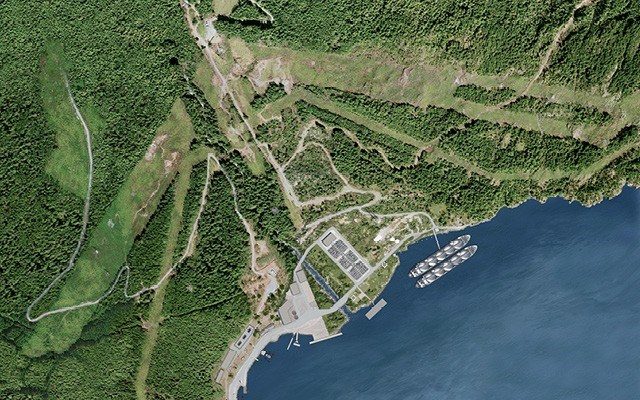Woodfibre LNG has cleared another hurdle.
On Oct. 14, the Squamish Nation (SN) voted to approve an Environmental Assessment Agreement (EAA) for the project.
"This decision is one step in a multi stage process, and just to be very clear, it's not an endorsement of the project," said Chief Ian Campbell of the SN.
In June, the SN laid out 25 conditions that would have to be met before the project could move forward. In July, Woodfibre publicly agreed to meet the 13 conditions that apply to its part of the proposal.
Under the EAA, the SN has significant decision-making powers concerning the choice of cooling technology and approval of management plans. They also have the option of pursuing legal action if the conditions aren't met.
"In all of our discussion with government, we've certainly been advocating for a framework which would include government-to-government decision making, economic participation, as well as environmental stewardship," Campbell said. "Those three pillars are very important to us."
Byng Giraud, Woodfibre LNG's vice president of corporate affairs, said the company was pleased to reach this point.
"We have a lot of work ahead of us. We have to meet these conditions, but we don't believe they're insurmountable," Giraud said.
"We very much appreciate a process that has a defined outcome. I think Squamish has done quite a good job here."
The biggest condition for the SN was control over the method of seawater cooling, Giraud said, but other conditions involve greater protections for marine life in Howe Sound, better insurance coverage and traditional access for SN members.
The full report will be published to the SN website at www.squamish.net.
By entering into this kind of agreement with the SN, Woodfibre is entering uncharted territory.
"It is new. It is innovative. Actually we're kind of proud of it," Giraud said. "Essentially you've got a situation where the SN asserts itself as a government to do their own environmental assessment and do their own environmental conditions... they've bound us through a contract, so we are legally bound to this agreement, to fulfill these conditions."
Provincial and federal government decisions on the project are expected later this year. Separate discussions concerning a SN environmental certificate for a Fortis BC pipeline that would supply Woodfibre LNG are ongoing.
"They've indicated a willingness to accept all of our conditions that pertain to their part of the project, and it looks like they're going to be committing to implementing all of the SN's conditions," Campbell said of Fortis.
After news of the agreement broke, community group My Sea to Sky — which has been opposed to the project since day one — issued a release of its own.
"It is really important, and we just appreciate how much that (the SN is) putting into this to make sure that they can protect their lands and waters for their future generations, so it's a good thing," said My Sea to Sky spokesperson Delena Angrignon.
But with a project this big, there are still many concerns to be addressed, Angrigon said, like those surrounding the Fortis BC pipeline route, Woodfibre's seawater cooling method, fracking in northeastern B.C. and increased tanker traffic in Howe Sound.
"Everybody realizes this is a gem that needs to be protected," she said. "This project hasn't proven that it can do anything to sustain what we have."
Campbell said the environment is still top of mind for the SN as well.
"Our membership have been very clear that they have some very serious concerns about the industrialization of Howe Sound," he said.
"We've seen the recent revitalization of the sound with whales and herring biomass... if this is going to be a reality for Howe Sound, we need to ensure that there are accountability and safeguards put in place that will protect this trend of revitalization."




